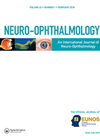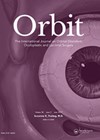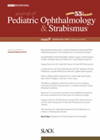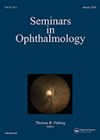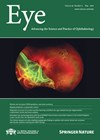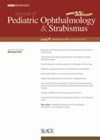
Journal Reviews archive for 2022
Visual prognosis in Irish Leber’s hereditary optic neuropathy
Leber’s hereditary optic neuropathy (LHON) is an inherited optic neuropathy This paper presents a retrospective review of clinical data from patients with LHON presenting to an Irish tertiary referral ophthalmic hospital. Clinical and genetic characteristics were assessed for useful biomarkers...
Transient thickening of the macular retinal nerve fibre layer in acute optic neuritis
Acute optic neuritis (ON) causes axonal degeneration, which can be quantified from the blood by neurofilament protein (Nf) levels. Within about three months, atrophy of the retinal nerve fibre layer (RNFL) follows. However, it remains challenging to explain why there...
Assaying acetylcholine receptor antibodies in the diagnosis of ocular myasthenia
Myasthenia gravis (MG) is an autoimmune disease that leads to impaired neuromuscular transmission. Solely ocular manifestations of MG (OMG) occur in 15-50% of cases, most frequently in the form of fluctuating ptosis and diplopia. Most cases of OMG convert later...
Risk factors for visual impairment in facial nerve palsy
Facial nerve palsy (FNP) is known to be associated with corneal exposure due to the nature of the condition, but how many of those will go on to develop severe visual impairment (SVI)? This study investigates the risk factors associated...
Lacrimal drainage system malignancies
This retrospective case series looks at the rare cases of lacrimal drainage system malignancies. The authors have identified 14 patients in 24 years, at a tertiary referral centre in the Indian subcontinent. Many previous publications have found squamous cell carcinoma...
Speculum use increases IOP in newborn measurements
The authors aimed to investigate the effect on using an eyelid speculum (Barraquer wire eyelid speculum) on IOP measurement in newborns with a mean age of 37 weeks under topical anesthesia. Mean gestational age at birth and mean post-conceptual age...
Use of botulinum toxin A in the treatment of intermittent exotropia
In this prospective cohort study, the authors aimed to evaluate the efficiency of botulinum toxin A (BTA) injection in the treatment of intermittent exotropia (IXT) and examine factors affecting treatment outcomes. Seventy-four patients diagnosed with any type of IXT were...
Handheld OCT in children with Down’s syndrome
This article investigated the use of handheld optical coherence tomography (OCT) in children with Down’s syndrome. Fourteen children were recruited to the study with a mean age of 6 years and 10 months with 57% male. All patients were dilated....
Bimedial resection surgery dose-response
The purpose of this study was to evaluate the dose-response relationship for primary bilateral medial rectus (MR) resection in 49 children with exotropia. Fifty-seven percent of children were male and mean age at surgery was 6.7 ±5.3 years. Mean preoperative...
Potential mechanism of over / under actions of inferior oblique muscles
In this paper, the authors hypothesise that fusional vergence adaptation, in patients who can fuse in at least some gaze positions, can cause curvature of the non-fixing eye movement paths of patients with apparent overaction or under action of the...
Surgical management options for NLDO
The authors aimed to develop a current collective practice profile for management of nasolacrimal duct obstruction (NLDO). They conducted an online survey of American Association of Pediatric Ophthalmology & Strabismus (AAPOS) members of which 142 completed surveys were collected within...
Effect of one versus 24 hours diagnostic occlusion
The purpose of this study was to compare measurements taken after one and 24 hours of diagnostic occlusion in cases of basic and divergence excess types of intermittent exotropia. This was a prospective study of 43 patients (34 females) with...

